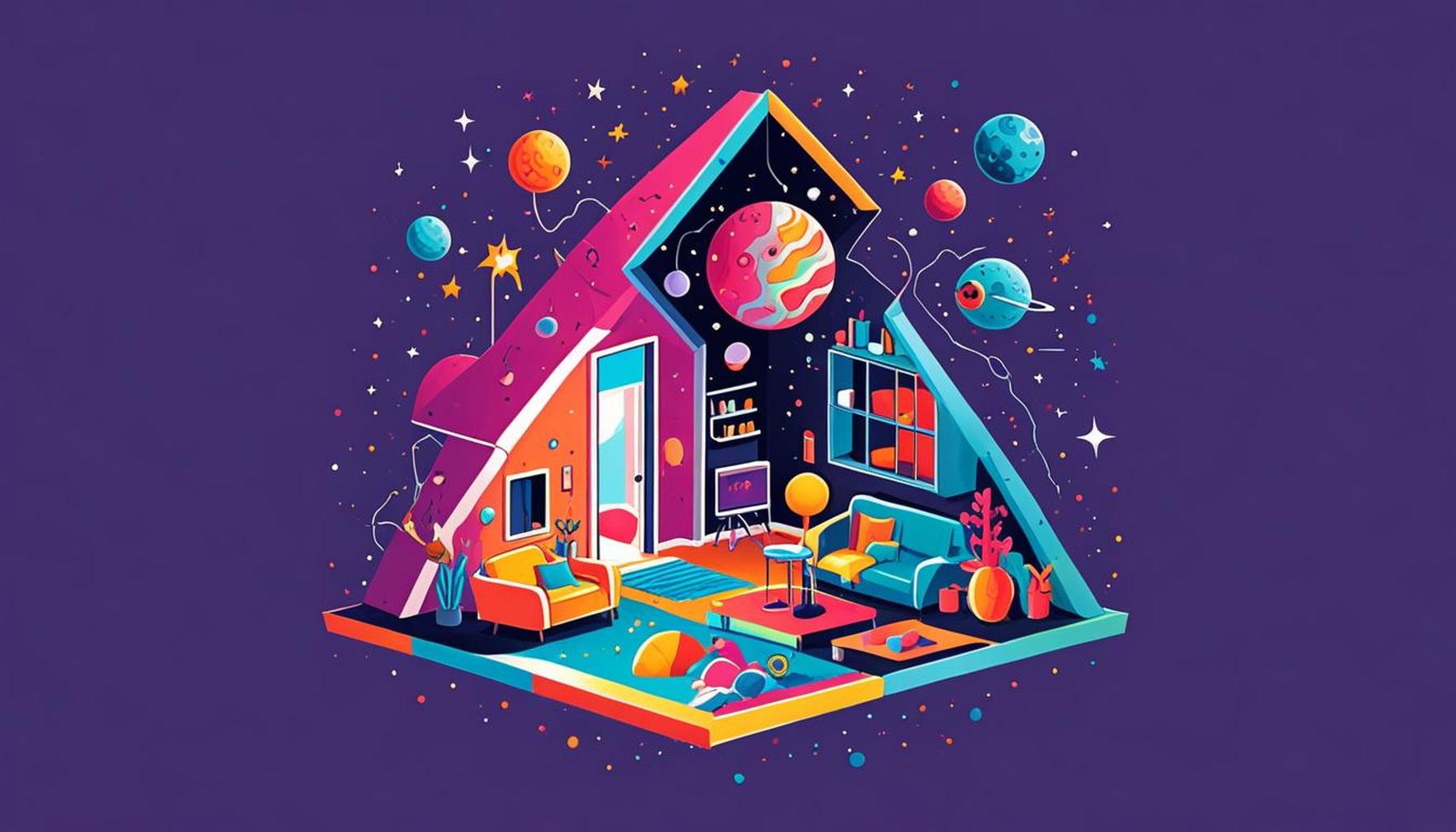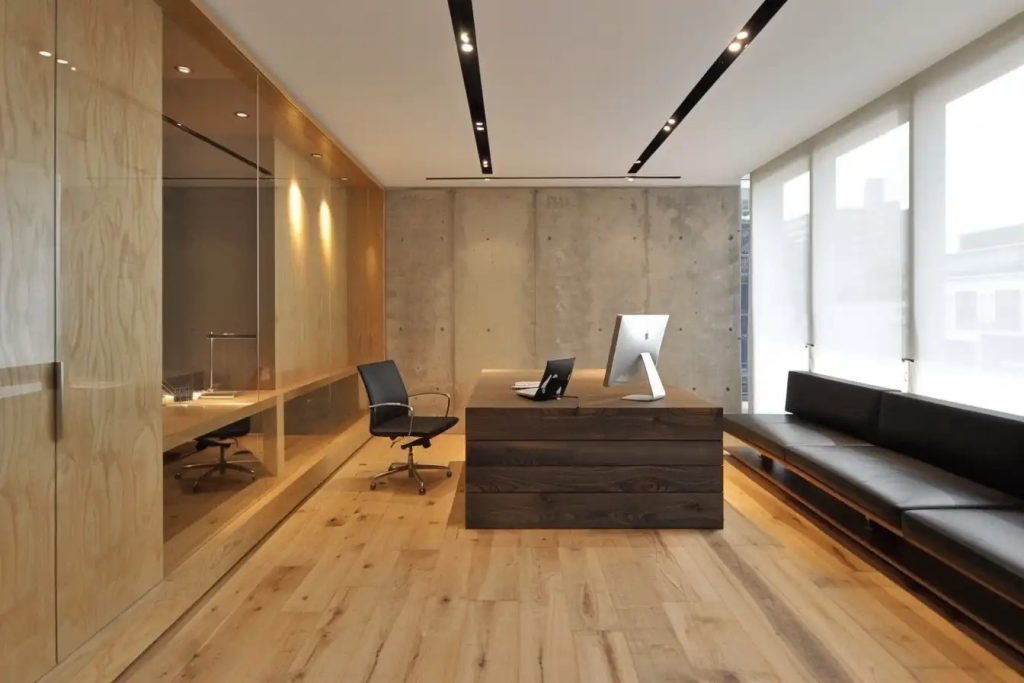The Psychology of Space: How Optimization and Minimalism Influence Our Perception of Home

Understanding Space and Its Impact on Mental Health
The concept of space extends well beyond merely the physical dimensions of our surroundings; it fundamentally influences our mental states and overall well-being. Research in environmental psychology indicates that the way we configure and organize our homes can drastically alter our perception of comfort and contribute to a sense of contentment. By delving deeper into this subject, we can glean insights into how our environments can be designed or modified to positively nurture our mental health.
For instance, consider the following facets of space optimization and minimalism, which have garnered significant attention in recent years:
- Clutter Reduction: Various studies, including those conducted by the Personality and Social Psychology Bulletin, show that high levels of clutter lead to increased stress, anxiety, and even depression. By decluttering our spaces, we can foster a sense of control and tranquility. A popular practice known as the “KonMari Method,” developed by Marie Kondo, encourages individuals to keep only items that “spark joy,” promoting a deep emotional connection to the items we choose to keep.
- Natural Light: The incorporation of windows and the use of light colors are proven methods for enhancing mood and productivity. According to research by the American Psychological Association, exposure to natural light has been linked to better sleep patterns, heightened mood, and improved concentration. In the United States, many workplaces and homes have begun utilizing skylights and large windows to harness this natural light, which is particularly important during long, harsh winters.
- Functionality: A well-organized space facilitates easier navigation and increases efficiency. When each item has a designated place, it minimizes distractions, allowing for a more focused and productive environment. Many American homes are now embracing the principles of functional design, where furniture serves multiple purposes, such as sofa beds or extensible dining tables, catering to both space constraints and lifestyle usability.
These factors reveal a fascinating link between how we design our personal spaces and our psychological state. The minimalist movement, which flourished in recent years, emphasizes simplicity and intentionality. It challenges us to reevaluate our possessions and asks: what do we truly need? This conscious curation encourages a lifestyle where only meaningful items are retained, reducing mental and physical clutter alike.
At its essence, crafting an optimized home environment is about cultivating a sanctuary that genuinely reflects personal values and aspirations. By embracing these principles, we can transform our living spaces into havens that enhance our well-being. This exploration into the psychology of space unveils new perspectives on how we can meticulously shape our surroundings to promote harmony and balance in our lives. Ultimately, the connection between our environments and mental health invites continuous reflection and adaptation, unlocking the potential for a more fulfilling life through thoughtful design.

DIVE DEEPER: Click here to discover more about minimalist design
The Role of Minimalism in Enhancing Psychological Well-being
As individuals navigate the complexities of modern life, the concept of minimalism has emerged as a powerful antidote to the chaos that often surrounds us. This intentional reduction of possessions not only declutters our physical spaces but also promotes a sense of mental clarity and well-being. Adopting a minimalist lifestyle can have far-reaching effects on our mental health, encouraging a shift toward mindful living.
Research supports the notion that living in a simplified space can lead to enhanced psychological health. Studies conducted by various psychological associations highlight that minimalism can help individuals forge deeper connections with their environments, fostering a sense of peace and purpose. The elements of minimalism can be broken down into several key aspects:
- Emotional Connection: When we focus on keeping only items that truly matter to us, we create a space enlivened by meaning. As noted by psychologists, a personal connection to our belongings can counteract feelings of emptiness and disconnection, improving our emotional well-being.
- Reduced Decision Fatigue: With fewer items to choose from, daily decision-making becomes simplified. Research from the field of cognitive psychology suggests that simplifying our choices can reduce stress and enhance overall cognitive performance. This means more mental energy for what genuinely matters in our lives, like relationships and personal development.
- Encouragement of Mindfulness: Minimalism encourages living in the present moment. By paring down distractions, we become more attuned to our surroundings, allowing us to appreciate the beauty in simplicity. Mindfulness practices, integral to well-being, are easier to embrace in a tranquil, uncluttered environment.
Moreover, the minimalist approach transcends mere aesthetics; it fosters a deeper societal shift towards sustainability and conscious consumption. As more individuals commit to minimizing their possessions, they contribute to a broader cultural movement that values sustainability and well-being over excess. This alignment manifests in numerous ways, from the organization of community swaps to the rise of second-hand markets that promote the efficient use of resources.
In the American context, where consumerism often drives behavior, minimalism challenges the status quo and invites us to reconsider what we truly need to lead fulfilling lives. The ethos of minimalism aligns with growing concerns about environmental degradation and waste, making it both a personal and societal choice. The focus on creating a home reflective of our values—free from the weight of unnecessary possessions—opens up opportunities for authenticity and satisfaction.
As we delve into the psychology behind space optimization and minimalism, it becomes clear that our homes are not merely places to reside; they are extensions of ourselves. By embracing a minimalist mindset, we can craft an environment conducive to flourishing mental health and greater overall happiness. The journey towards an optimized space is not just about aesthetics—it’s about cultivating a rich internal landscape that mirrors our hopes and aspirations.
| Category | Description |
|---|---|
| Spatial Optimization | Utilization of available space to enhance functionality and flow. |
| Cognitive Clarity | Reduced clutter leads to improved focus and mental well-being. |
| Aesthetic Appeal | Minimalism creates a serene environment that enhances emotional comfort. |
| Emotional Resilience | A well-designed space can promote relaxation and reduce stress levels. |
The concept of “The Psychology of Space” touches on many critical aspects of our everyday environments. One key factor is spatial optimization, which emphasizes the effective use of available space, enabling an effortless flow of movement and functionality within the home. This is particularly important in smaller living areas where maximizing every square foot can significantly impact both usability and emotional comfort.Moreover, the relationship between cognitive clarity and minimalistic design cannot be overstated. When spaces are free of clutter, individuals experience reduced distractions, thereby fostering an ideal environment for focused tasks like work, study, or relaxation. This cognitive benefit can lead to increased productivity and overall happiness at home.The aesthetic appeal of a minimalist space contributes not only to visual enjoyment but also to emotional wellbeing, resulting in a home that radiates tranquility and warmth. Lastly, emotional resilience is strengthened through dedicated spaces designed for relaxation. A thoughtfully curated home environment serves as a sanctuary, reinforcing a sense of safety and promoting restful states of mind.Thus, these elements of spatial optimization and minimalism are integral to understanding how our perception of home can be harnessed to enhance our everyday experiences, leading to a more fulfilling and balanced life.
DIVE DEEPER: Click here to discover more insights
The Impact of Space Optimization on Functionality and Comfort
In tandem with minimalism, the concept of space optimization plays a pivotal role in shaping our perception of home, transforming our environments into functional sanctuaries. As urban living spaces become more compact, especially in bustling cities like New York and San Francisco, the need for optimizing space has never been more critical. This movement towards maximizing utility while maintaining comfort illuminates how our surroundings can directly influence our psychological states.
Research in environmental psychology highlights that the organization and layout of our spaces significantly affect our mood, productivity, and overall sense of well-being. Key elements of space optimization that can elevate our experiences at home include:
- Functional Layout: A well-considered layout that prioritizes flow and accessibility allows individuals to navigate their homes with ease. Studies reveal that homes designed with open floor plans can foster communication and interaction, particularly beneficial for families and roommates. This layout not only enhances functionality but also nurtures relationships, contributing to a positive emotional atmosphere.
- Multi-Purpose Furniture: In smaller homes, the use of multi-functional furniture—such as sofas that convert into beds or coffee tables with storage—maximizes utility without sacrificing style. A growing trend in furniture design emphasizes versatility, allowing residents to create dynamic spaces that cater to various activities, from work and relaxation to entertaining guests. This adaptability promotes a sense of control over one’s environment, which is known to enhance psychological well-being.
- Natural Elements: Integrating natural elements into home design, such as indoor plants, natural light, and organic materials, can create a serene atmosphere. Numerous studies have shown that greenery in living spaces improves mood, reduces stress levels, and enhances cognitive function. By optimizing our spaces to include these elements, we not only improve aesthetics but also support our mental health.
- Personalized Touch: Space optimization is not just about functionality but also about mirroring personal identity. Incorporating personalized decor, artwork, or keepsakes can foster a feeling of belonging, which is essential for emotional resilience. This personalization creates a profound sense of attachment to the space, making it more than just a physical shelter but a comforting refuge that reflects individual values and narratives.
Furthermore, the cultures surrounding space optimization and minimalism in the United States reveal varying approaches to home life. For instance, the tiny house movement has gained traction among millennials seeking financial freedom and purposeful living. Reports show that many of these homeowners report increased happiness and a deeper sense of community, stemming from their choice to downsize and live with less. This paradigm shift highlights how optimizing space can fundamentally alter perceptions of home, emphasizing experiences over possessions.
Ultimately, the interdisciplinary examination of space optimization and minimalism intertwines with elements of psychology, design, and sociology, crafting a complex narrative that informs how we live. By understanding how these principles influence emotional well-being, individuals can curate environments that not only maximize functionality but also enhance their overall quality of life.
DISCOVER MORE: Click here to learn about advanced decluttering methods
Conclusion: Embracing the Psychology of Space
As we navigate the complex interplay between space optimization and minimalism, it becomes evident that our homes are more than mere shelter; they are reflections of our identities, values, and emotional states. The insights from environmental psychology underscore the profound impact that thoughtfully designed spaces can have on our mental well-being. By utilizing principles such as functional layout, multi-purpose furniture, and the integration of natural elements, we can cultivate environments that not only cater to our daily needs but also foster positive emotional experiences.
The rise of movements like the tiny house phenomenon exemplifies a growing awareness of the psychological benefits associated with decluttering and intentional living. Residents find that downsizing liberates them from material constraints, allowing for deeper connections with their surroundings and communities. This shift towards valuing quality over quantity underscores a pivotal change in how we perceive home; it symbolizes a sanctuary that prioritizes mental clarity and emotional resilience.
As we continue to innovate in optimizing space, it is critical to recognize the symbiotic relationship between our physical environments and psychological health. This understanding invites us to reimagine our living spaces as platforms for well-being and personal expression. Ultimately, by embracing the psychology of space, we can create homes that not only optimize functionality but also nurture our spirit, fostering a profound sense of belonging and joy in the spaces we inhabit.



